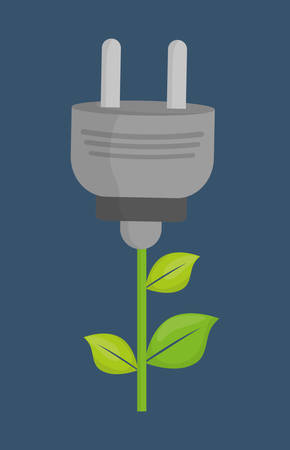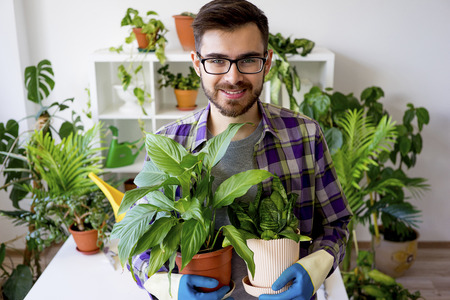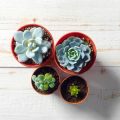Understanding Grow Light Basics
If youre starting an indoor garden, one of the most important things to understand is how grow lights work. Since your plants won’t get natural sunlight indoors, grow lights act as a substitute to help them grow strong and healthy. Whether you’re growing herbs on your kitchen counter or tending to a full indoor greenhouse, having the right lighting setup can make all the difference.
Why Grow Lights Matter
Plants need light for photosynthesis — it’s how they convert energy into growth. Without enough quality light, your plants may become leggy, weak, or stop growing altogether. This is especially true during winter months or in rooms without sufficient natural light. Grow lights provide the specific wavelengths your plants need to thrive indoors.
Types of Grow Lights
There are several types of grow lights available, and each has its own benefits depending on what you’re growing and how much space you have. Heres a quick comparison to help you understand the differences:
| Type | Pros | Cons | Best For |
|---|---|---|---|
| LED | Energy-efficient, long lifespan, low heat output, customizable spectrum | Higher upfront cost | All-purpose use, energy-conscious growers, small to large setups |
| Fluorescent (CFL & T5) | Affordable, good for seedlings and leafy greens, low heat | Shorter lifespan than LEDs, less intense light | Beginners, herbs, leafy vegetables, small spaces |
| HID (MH & HPS) | High-intensity light, proven results for flowering and fruiting plants | Generates more heat, uses more electricity, needs external ballasts | Larger grow rooms, experienced gardeners with ventilation systems |
How Grow Lights Work
Grow lights emit light in different parts of the spectrum that mimic sunlight. Plants primarily use blue and red wavelengths for growth — blue for vegetative development like leaves and stems, and red for flowering and fruit production. Some advanced LED grow lights let you adjust the spectrum depending on your plant’s stage of growth.
Light Intensity & Duration
The strength (intensity) of the light and how long its on (duration) also play big roles in plant health. Most indoor plants need 12–16 hours of light per day. Adjustable timers can help automate this process so your plants get consistent exposure every day.
Pro Tip:
If youre not sure how much light your plants need, start with 14 hours per day and adjust based on their response. Watch for signs like stretching (they need more light) or leaf burn (too much intensity).
Now that youve got a solid understanding of grow light basics, youre ready to explore how to pick the right one for your indoor garden setup.
2. Key Factors to Consider Before Buying
Choosing the right grow light for your indoor garden can make all the difference in how well your plants grow. Whether youre nurturing herbs on a kitchen shelf or managing a full-sized grow tent, its important to understand a few key features before making a purchase. Here are the most important factors to keep in mind:
Light Spectrum
Plants need different types of light during various growth stages. Look for full-spectrum LED grow lights that mimic natural sunlight. These typically include red and blue wavelengths—blue helps with leafy growth, while red promotes flowering and fruiting.
Quick Tip:
For leafy greens and herbs, prioritize lights with more blue spectrum. For flowering plants like tomatoes or peppers, choose lights that offer more red spectrum coverage.
Wattage
Wattage affects how much energy your grow light uses and how powerful it is. However, higher wattage doesn’t always mean better results. Its about finding the right balance between power and efficiency based on your plant needs and space size.
| Grow Area Size | Recommended Wattage Range |
|---|---|
| Small (1–2 sq ft) | 20–100 watts |
| Medium (2–4 sq ft) | 100–300 watts |
| Large (4+ sq ft) | 300+ watts |
Coverage Area
Each grow light is designed to cover a specific area effectively. Check the manufacturers specs to ensure the light covers your entire growing space without leaving dark spots. Some lights allow you to daisy-chain multiple units together for larger areas.
Energy Efficiency
An energy-efficient grow light can save you money on electricity bills over time. LED lights are generally more efficient than older technologies like HID or fluorescent lights. Look for lights labeled with high PAR (Photosynthetically Active Radiation) per watt values for better performance.
Heat Output
Some grow lights generate a lot of heat, which can stress plants or require extra cooling equipment. LED grow lights usually run cooler and are ideal for small indoor spaces where temperature control is important.
Did You Know?
If your hand feels hot under the light after a minute, its likely emitting too much heat for close-range use without ventilation.
Selecting the best grow light depends on understanding these essential features and matching them with your specific indoor gardening goals. By considering light spectrum, wattage, coverage area, energy efficiency, and heat output, youll be one step closer to creating a thriving indoor garden.

3. Comparing LED vs. Fluorescent vs. HID Lights
When choosing the best grow light for your indoor garden, its important to understand the differences between the three most common types: LED, fluorescent, and HID (high-intensity discharge) lights. Each type has its own strengths and weaknesses, so picking the right one depends on your plants’ needs, available space, budget, and energy preferences.
LED Grow Lights
LED (Light Emitting Diode) grow lights have become increasingly popular among home gardeners due to their energy efficiency and long lifespan. They’re great for small to medium-sized indoor gardens and can be tailored to provide specific light spectrums that plants need during different growth stages.
Pros:
- Energy-efficient—uses less electricity than other options
- Long-lasting—can last up to 50,000 hours or more
- Low heat output—reduces the risk of burning plants
- Customizable spectrum—some models offer adjustable settings for different growth phases
Cons:
- Higher upfront cost compared to other types
- Quality varies widely between brands
Fluorescent Grow Lights
Fluorescent lights, especially T5 and CFL (compact fluorescent lamp) models, are a good entry-level option for beginners. They work well for leafy greens, herbs, and seedlings but may not provide enough intensity for fruiting or flowering plants.
Pros:
- Affordable initial cost
- Cools easily—less risk of overheating in small spaces
- Sufficient for low-light plants and early growth stages
Cons:
- Lifespan is shorter than LEDs (typically around 10,000 hours)
- Inefficient for high-light-demand crops like tomatoes or peppers
- Tubes may contain small amounts of mercury—requires careful disposal
HID Grow Lights
HID lights include Metal Halide (MH) and High-Pressure Sodium (HPS) bulbs. These lights are commonly used by more experienced growers because they provide strong light intensity that supports flowering and fruit production.
Pros:
- Packs a powerful punch—great for large grow spaces and light-hungry plants
- Tried-and-true technology used by commercial growers
Cons:
- High energy use—can increase electricity bills significantly
- Generates lots of heat—may require additional ventilation or cooling systems
- Lamps need regular replacement (usually every 6–12 months)
Grow Light Comparison Table
| Type | Best For | Lifespan (avg.) | Energy Use | Heat Output | Cost Range |
|---|---|---|---|---|---|
| LED | All plant stages; small to medium gardens | Up to 50,000 hrs | Low | Low | $50–$500+ |
| Fluorescent (T5/CFL) | Sowing seeds, herbs, leafy greens | Around 10,000 hrs | Moderate | Mild to moderate | $20–$150+ |
| HID (MH/HPS) | Larger setups; fruiting/flowering plants | Around 6,000–12,000 hrs per bulb | High | High—needs cooling system | $100–$300+ (plus accessories) |
No matter which type you choose, the key is matching your grow light to your plant’s specific needs and your gardening goals. Whether youre growing fresh herbs on your kitchen counter or building out a full grow tent setup in your basement, understanding these options will help you make a smart investment in your indoor garden.
4. Budgeting and Cost Effectiveness
When choosing a grow light for your indoor garden, it’s important to look beyond the initial price tag. Understanding both the upfront cost and the long-term expenses—like electricity usage and bulb replacement—can help you make a smart, budget-friendly decision that won’t surprise you later.
Upfront Costs vs. Long-Term Value
Some lights may seem like a bargain at first, but they might end up costing more over time due to high energy use or frequent bulb replacements. Heres a quick comparison of common grow light types:
| Type of Grow Light | Initial Cost | Energy Efficiency | Lifespan | Ongoing Costs |
|---|---|---|---|---|
| LED | High | Very High | Up to 50,000 hours | Low (energy-efficient, rare replacement) |
| CFL (Compact Fluorescent Lamp) | Low to Medium | Moderate | Around 8,000 hours | Medium (more frequent replacements) |
| T5 Fluorescent | Medium | Good | Around 20,000 hours | Medium (decent efficiency but still needs replacement) |
| HID (MH/HPS) | Medium to High | Poor to Moderate | Around 10,000 hours | High (uses lots of power and bulbs wear out quickly) |
Your Electricity Bill Matters Too
The wattage of your grow light directly affects your monthly power bill. LED lights use significantly less energy than HID or fluorescent lights while delivering comparable or even better results for most indoor gardens. For example, a 300-watt LED can often replace a 600-watt HPS fixture, cutting energy use in half.
A Quick Look at Monthly Energy Costs*
*Estimates based on average U.S. electricity rate of $0.15 per kWh and 16 hours/day usage.
| Light Type | Total Wattage Used Daily (16 hrs) | Kilowatt-Hours per Month | Estimated Monthly Cost ($) |
|---|---|---|---|
| LED (300W) | 4.8 kWh/day | 144 kWh/month | $21.60/month |
| CFL (400W total) | 6.4 kWh/day | 192 kWh/month | $28.80/month |
| T5 Fluorescent (432W) | 6.9 kWh/day | 207 kWh/month | $31.05/month |
| HPS (600W) | 9.6 kWh/day | 288 kWh/month | $43.20/month |
Savings Add Up Over Time
If youre planning to garden indoors year-round or grow multiple plants, those monthly savings from using an efficient light like an LED will really add up over time. While LEDs may cost more initially, they often pay for themselves within a year or two through lower energy bills and fewer bulb changes.
A Tip for Smart Shoppers:
If youre on a tight budget, consider starting with a smaller LED setup and expanding as needed. Many brands offer modular systems that let you build up without having to replace everything later on.
The key is to balance what you can afford now with what will save you money in the long run—and keep your plants happy and thriving along the way.
5. Setting Up and Using Your Grow Light
Once youve selected the right grow light for your indoor garden, its time to set it up correctly to ensure your plants thrive. Proper installation, positioning, and scheduling are key to getting the most out of your grow light. Here’s a simple guide to help you get started.
Proper Installation Tips
Start by reading the manufacturers instructions included with your grow light. Most LED grow lights are easy to install and come with hanging kits or adjustable stands. Make sure to:
- Securely mount or hang the light above your plants using hooks or brackets.
- Ensure good airflow around the fixture to prevent overheating.
- Plug the light into a timer or smart outlet for consistent daily use.
Light Positioning for Optimal Growth
The distance between your grow light and plants can make a big difference in their growth. Too close, and you risk burning the leaves; too far, and they might not get enough light. Heres a general guideline based on light type:
| Light Type | Recommended Distance from Plants |
|---|---|
| LED (Low Wattage) | 12–24 inches |
| LED (High Wattage) | 24–36 inches |
| Fluorescent (T5/T8) | 6–12 inches |
| CFL (Compact Fluorescent) | 6–12 inches |
| HID (MH/HPS) | 24–48 inches (with proper ventilation) |
Pro Tip:
If youre unsure about the exact height, start higher and gradually lower the light while observing your plant’s response. Look for signs like stretching (too far) or leaf curling/burning (too close).
Recommended Daily Light Schedules
Different types of plants need different amounts of daily light exposure. Using a timer ensures consistency, which is essential for healthy growth. Here’s a quick reference chart:
| Plant Type | Daily Light Duration | Notes |
|---|---|---|
| Leafy Greens (lettuce, spinach) | 12–16 hours/day | Fast growers that love lots of light. |
| Herbs (basil, mint, parsley) | 12–14 hours/day | A bit less than leafy greens but still plenty of light needed. |
| Fruiting Plants (tomatoes, peppers) | 14–18 hours/day during vegetative stage, 12–14 hours during flowering stage |
Needs more intense lighting especially when fruiting. |
| Succulents & Cacti | 10–14 hours/day | Loves bright conditions but can tolerate slightly shorter durations. |
| Tropical Houseplants (pothos, philodendron) | 10–12 hours/day | Sensitive to too much direct light—go for moderate brightness. |
Troubleshooting Common Issues
If your plants aren’t growing as expected, consider these common issues:
- Pale leaves or leggy stems: Your plants might need more light or closer placement.
- Browning or curling leaves: Lights may be too close; try raising them a few inches.
- Mold or fungus growth: Ensure proper air circulation and don’t overwater.
Create a Routine That Works for You—and Your Plants!
The key to success with grow lights is consistency. Use automatic timers, check your plants progress weekly, and adjust as needed based on their response. With a little care and attention, youll have a thriving indoor garden year-round!


